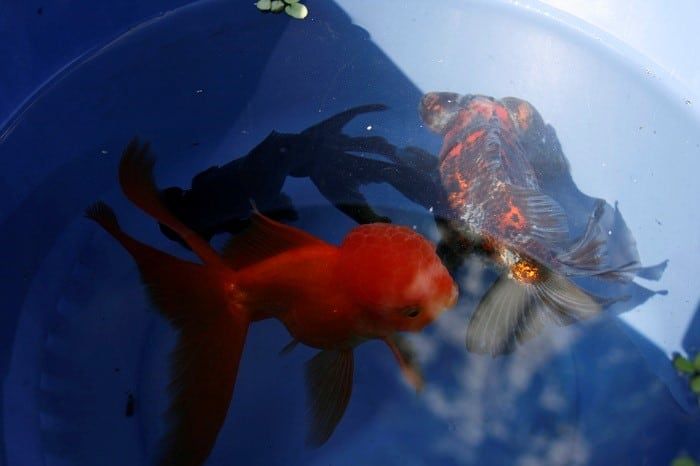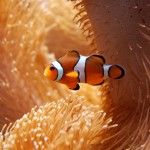How to Acclimate Freshwater Aquarium Fish to your Tank
After setting up your new aquarium and going through the tedious process of waiting for the tank to cycle, it can be very tempting to snag some pretty fish at the aquarium store and release them quickly to liven things up. Unfortunately, this can lead to significant problems: if you impulse buy and don’t acclimate, your new fish might not live a long and happy life.
So how do you make sure your new pets make it through the first few hours in their new home? Acclimation is key. We’ll tell you all about it below.
Why is Acclimation Important?
Stability is a very important keyword in fishkeeping and the reason you need to acclimate any new additions before introducing them into your tank.
Fish and invertebrates don’t respond well to sudden changes in water values and temperature at all. These swings stress them out and can easily lead to shock or even death. So as tempting as it might be to release new fish right away and see them swim freely in their new environment (we know the feeling!), you’ll have to be patient for a little longer. Spending a little more time in their bag or a bucket doesn’t hurt the fish and is much better than the so-called ‘plop ‘n drop’ method.
Plan, Plan, Plan
One part of the acclimation process that aquarists tend to forget is planning. It’s not just about giving the fish time to get used to the water values in your aquarium: you’ll also have to make sure those water values are actually in order. This is why, as frustrating it might be to avoid impulse buying your ‘dream fish’ at the aquarium store, you should always be prepared.
There are a few factors that you should keep in mind when getting ready for the arrival of new fish. First off, know when you’re going to buy or receive your stock. If you’ve ordered online, make absolutely sure that you will be home when the package arrives. Research beforehand so you know the desired water values for the species you’re interested in and make sure your aquarium is in the acceptable range.
The day before your purchase or the arrival of your new fish, do a water change to remove any excess nitrates. You don’t want to have to do this after their arrival, as you’ll want to leave them alone as much as possible to prevent stress. Lastly, the day of your purchase, perform one last water test to make absolutely sure your aquarium water is safe.
The Acclimation Process
Now that you’ve got everything set and ready to go, you’re ready to head out and get your fish. Yay! Try to make transport as stress-free as possible by using an insulated box to prevent temperature swings and keeping things dark.
Temperature
Alright! You’ve got your new fish or inverts and have arrived at your home. It’s time to start the acclimation process, and the way to do so is by comparing the temperature in the bag to that of your tank. More than a five degree difference? Get the temperatures matched before moving on to drip acclimating. You can do so by floating the bag in your tank for as long as needed. If you can’t float the bag itself, a floating plastic container also works just fine.
Drip Acclimating
Once the temperatures are equal you can move on to the process of drip acclimating, which is the easiest and most stress-free way to acclimate new stock. All you need are a container, such as a bucket, and some airline tubing. A control nozzle for the tubing comes in handy but if you don’t have one there’s another way to control the flow.
 Gently place the fish and their water in the container. Start the water flow through the airline tubing from your aquarium to the container. The key is to regulate the flow so it’s just a gentle drip, which is either done by using the nozzle or by folding a piece of the tubing and fastening this with a rubber band to block part of the water. If you’re using the latter method you might have a little more trouble getting the flow as you want it (around three drops per second), but with a little fiddling it usually works out.
Gently place the fish and their water in the container. Start the water flow through the airline tubing from your aquarium to the container. The key is to regulate the flow so it’s just a gentle drip, which is either done by using the nozzle or by folding a piece of the tubing and fastening this with a rubber band to block part of the water. If you’re using the latter method you might have a little more trouble getting the flow as you want it (around three drops per second), but with a little fiddling it usually works out.
Tip: Your fish will appreciate a little cover in the form of a plant or even just some floating mesh. You’ll also want to put some kind of lid on the container: this prevents any jumpers from ending up on the floor and provides soothing darkness.
And now… you wait. Fishkeeping is a hobby for the patient, and acclimating is no exception. You’ll want to roughly quadruple the amount of water in the container, which obviously takes quite a while with such a slow water flow. Check back regularly to see if all is well, but leave the fish alone as much as possible otherwise.
After Acclimating
After around two hours the acclimation process is finished. Hopefully (and likely!) all of your fish will still be alive at this point, though despite your best efforts they are likely still quite stressed and not very happy. Time to move them to their new home and leave them alone so they can settle.
Grab a net and gently move your new additions to the aquarium (with as little air time as possible). Make sure the tank lights are off and keep them this way for at least 24 hours. Ignore the urge to feed the fish in an attempt to make them comfortable: they’ll be fine and it’s more important for them to get some peace and quiet. Once you turn the tank lights on the next day, keep a close eye on new fish for a while in case of disease or other issues.
Skip the Stress
Feeling intimidated by all the steps that are necessary to get new fish from A to B without any casualties? We can imagine. Luckily FantaSEA aquariums is here to take care of all aspects of setting up and maintaining an aquarium for you. All fish are quarantined to prevent disease and carefully acclimated to your aquarium by our knowledgeable staff. Sound good?




